► Volkswagen ID.3 review: facelifted model driven
► Golf-sized hatch, with improved interior quality
► Slimmed down range, still a major contender
The Volkswagen ID.3 was the start of a new era at VW, but since it was launched in 2020, it’s been inundated by a raft of new metal competing for your battery-charged monthlies. But its first electric car built on the dedicated MEB electric vehicle platform has been lightly facelifted to improve its weakest area – its rather minimalist interior and middling quality.
When the ID.3 was originally launched, it was up against the Nissan Leaf and Hyundai Kona Electric. Things have certainly moved on since them with the Citroen e-C4, Renault Megane E-Tech, Cupra Born and MG4 EV offering strong opposition in the small EV arena. The MG especially, will be cause for VW to sit up and take notice, not least because it’s very good as well as offering much better value pricing.
VW hasn’t been standing still. It has been working hard on scaling up its EV output, building a raft of MEB-based electric Volkswagens – including the VW ID.4 and VW ID.5 – with plenty more to come in the next few years. It’s fair to say that the ID.3 didn’t have the smoothest start in life. It’s been plagued with software problems, the infotainment system is sometimes infuriating, supply chain issues have disrupted production, and the CEO responsible for bringing it to market left the company.
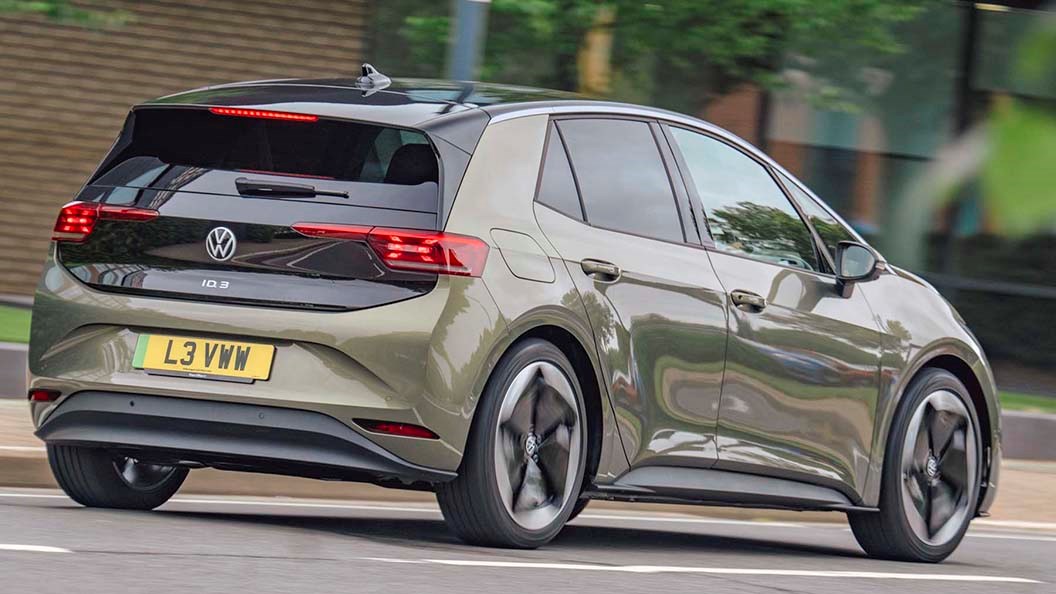
But that should all be in the past now – and the ID.3’s smart new range of trims and colours, uplift in quality, and now-stable software should see the highly-appealing hatch finally assume the position as the perfect family car for EV converters. Is this enough to keep it at the sharp end of the EV grid?
What’s new, and what isn’t?
The changes are minimal. The ID.3 is slightly wider and slightly taller than a Volkswagen Golf, though not quite as long, and is close to being a classically-sized hatchback in an SUV-dominated world. You’d probably be right to point out that it offers nothing like the breadth and depth of trim levels and specification that the Golf does, especially now the range has been simplified for the facelift.
There are two versions available, based on a pair of battery sizes and trims: the 58kWh Pro and the 77kWh Pro S, and a number of equipment pacrks will adequately cover off most people’s indivdual needs. We’ll unpick these in a moment, but if you’re after a family EV to minimise public charger anxiety, the larger 77kWh battery pack claims up to 347 miles of WLTP driving range.
However, the Pro and the Pro S both offer plenty of equipment packs to cater to individual tastes, so you’ll still be able to spend a pretty penny on your ID.3 should you wish do.
What’s it like inside?
Jump in and there’s a mixture of surprise and delight. The infotainment and instrumentation are as before – a shame as European-market cars get a new 12.9-inch system. It’s nice to see that in this EV, you adjust the steering column and the compact digital instrument cluster moves with it, rather than being fixed to the dashboard. It’s a moddernist touch we approve of.
Other cars have done this moving cluster trick, of course. But not in such a minimalist fashion, and not with the gear selector attached to said cluster as a chunky nodule on the side. What’s more, you never have to actually do anything to start the ID.3 – as soon as you sit in the driver’s seat the infotainment comes to life and the novel ID Light that spans the width of the lower windscreen illuminates itself in greeting.

Seatbelt on, all you have to do next is twist the gear protrusion (presumably trying to ignore the slightly poor fit of the plastic if you’ve actually bought the car) to engage Drive, and off you go. There’s no handbrake of any description, just a button for Park that sorts everything out for you.
When you arrive at your destination – probably much more quickly than you were expecting – you hit P and get out. The ID.3 switches itself off when you exit the seat, and you walk away – if the full keyless package is fitted you won’t even have to lock it. Somehow it feels less like a car than a service, but we don’t mean that in a bad way.
What’s the build quality like?
The interior design features big slabs of soft-touch plastics on the door panels and dash. These have been upgraded over the original ID.3 – good inasmuch as the quality is so much better, but ness so because it’s lost that cheeky, minimalist feel of the old model. However, it does feel more Volkswagen, which for the less-than-early adopters VW hopes to attract, is no bad thing.
A central 10.0-inch screen that’s angled towards the driver has inhaled most of the secondary controls. At a glance it may hit all the right emotional buttons as a functional piece of visual theatre, but upon pressing some of the few physical buttons that remain you may find the depth-of-quality perception turns out to be an illusion.
Some of the plastics Volkswagen has chosen for its ID models aren’t as nice as they appear. This is sort of okay in the ID.3 (although the Cupra Born puts it to shame), but becomes less so as you move into the bigger and more expensive ID.4 and ID.5 models. We’d gladly trade the ‘play’ and ‘pause’ symbols on the metal pedal surfaces for a little more tangible quality here.

However, perhaps more importantly, the ID.3 is seriously spacious inside. The lengthy wheelbase, cab-forward windscreen and higher roofline make for lots of leg- and headroom, while the 385-litre boot is five litres bigger than a Golf’s, despite having an electric motor attached to the rear axle under there somewhere.
The seating position is a little raised up, and so too is the floor – but since this is due to the battery pack beneath you don’t notice this too much in the corners. The centre of gravity is that much lower than ‘normal’ for the same reasons.
What about infotainment and tech?
The 10.0-inch central touchscreen takes only a modest amount of figuring out, fortunately, as it’s inhaled most of the secondary controls. This has some clever shortcuts for ventilation options, and makes a substantial amount of customisation available to the driver. Although initially laggy, this has improved over time.
But the ‘Hello ID’ voice control still isn’t overly impressive; even after various over-the-air software updates, customer cars still struggle to understand basic instructions and remain immune to UK postcodes.
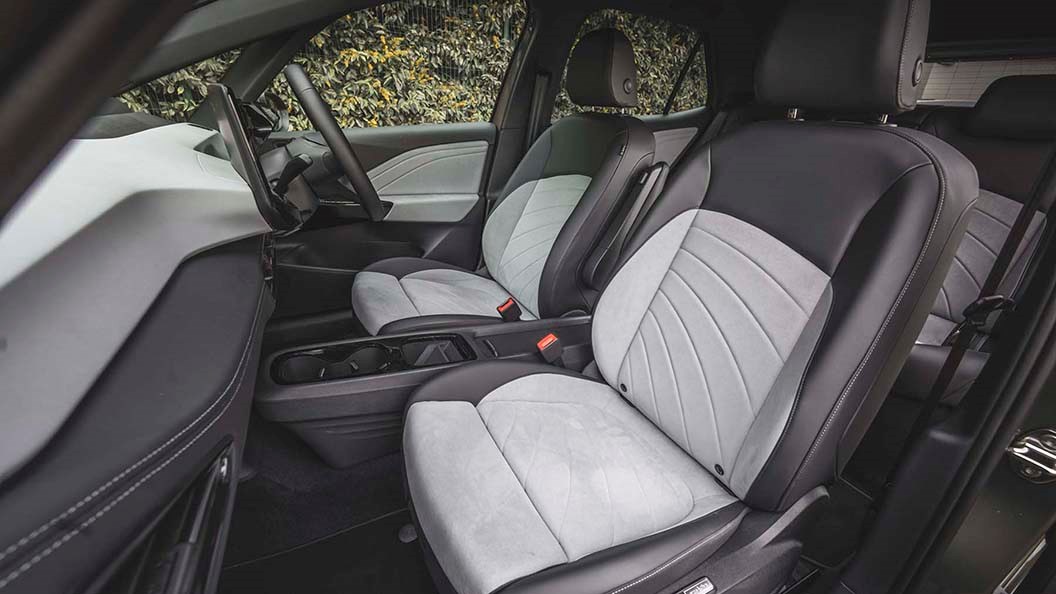
Similarly. the unnecessarily finickity touch-sensitive panels that control many of the other features – such as the lights – continue to feel like a backwards step compared to the sensible clarity we used to get inside Volkswagens. While these may have lacked the visual theatre that future-gazing EV design tends to inspire, they did a much better job of their fundamental purpose, such as switching on the foglights at the first try.
Some of the ergonomics are weird, too. That lighting panel is an uncomfortable stretch away, the controls on the steering wheel are verging on nasty, and there are no separate switches for the rear electric windows in the front. Instead, a button behind allows the front controls to operate the rears.
Fortunately, the ID.3 wins back some lost points with the driving experience.
What’s it like to drive?
You won’t be surprised to learn that the facelift brings no real change here being as good as ever. With very little front and rear overhang and a 201bhp electric motor attached to the rear axle, giving the car 50:50 weight distribution and freeing up the front wheels to concentrate on steering, Volkswagen has created an electric car that’s a lot more entertaining than you’d expect for something that’s essentially a family runabout.
Some critics will complain that it’s not deeply involving – the steering, while convincingly weighted, is a little numb, as if it’s been experimenting with Novocain. But regardless of battery pack size, this is a fast, compact car that is happy to get stuck into a set of corners.
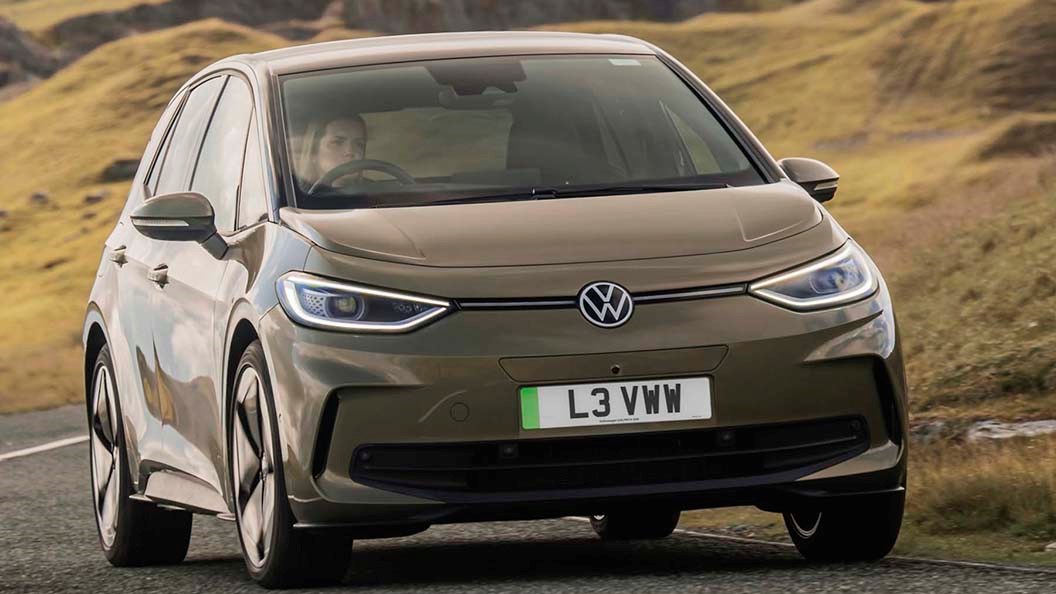
The Pro S best 0-62mph time of 7.3sec doesn’t really do the acceleration justice. It’s not ludicrously quick like a Tesla, but it deploys the 229lb ft instantly available with an insistent shove that for some reason puts us in mind of a speeding freight train forcing its way through a giant marshmallow. Traction is excellent, even in greasy conditions.
There’s no sudden impact of walloping thrust here, but a sort of relentless on-rushing that, in combination with a single-speed transmission that never needs to pause for breath, means you sometimes find yourself quite out of step with how fast you thought you were going. So it’s maybe good news that the ID.3 is electronically limited to 99mph.
It rides remarkably well for something on rubber-band-shod 19-inch wheels, only occasionally clattering into particularly bad surface intrusions. Weighing upwards of 1700kg probably helps smooth things out, a heft you can feel in the lateral chop that emerges during harder cornering. Yet there is an underlying pliancy here, and despite the numbness, the steering is deft, with a lightness of touch that belies that Heffalump status (which to be fair, isn’t too bad for an EV).
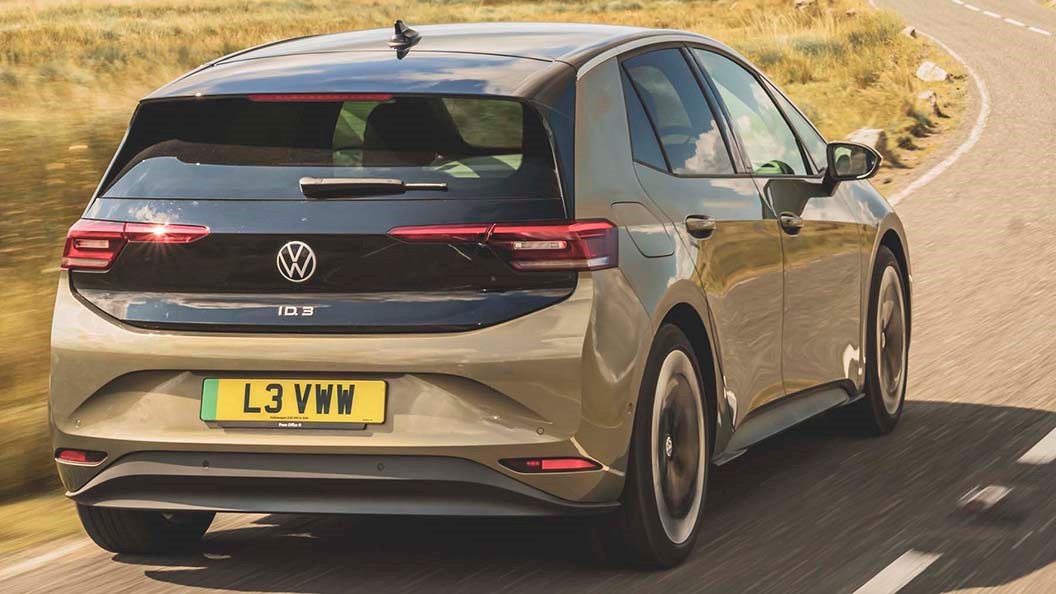
At the moment, electric propulsion is still enough of a novelty that for many the ID.3’s driving experience will feel totally revolutionary – and really, it does handle undulating British B-roads very well. So although the ID.3 lacks a little character compared with some ICE alternatives, it’s still an appealing way to get around.
What about the ID.3’s battery range?
Given the pace of electric vehicle development, it was no surprise that the ID.3 knocked the spots off equivalent rivals when it came to official electric car driving range. In big-battery Pro S specification, the 347-mile WLTP rating slotted between the single-motor Tesla Model 3 (305 miles) and the Model 3 Long Range (374 miles).
Now that capability – and beyond – is much more widely available, not least from the near-identical Cupra Born. In real-world terms, we have plenty of ID.3 experience testing the 58kWh and 77kWh battery packs in combination with the 201bhp Pro Performance motor set-up. With the smaller battery, we’ve found 190 miles max to be the more likely scenario, while the bigger battery can comfortably manage 280.
Those are substantial shortfallings over the official ratings, but once out on the road we’ve found not even a seriously sustained amount of committed cross-country driving generated the slightest twitch of range anxiety. The miles fall steadily, not in terrifying chunks, making your ability to cover distances predictable and unalarming.
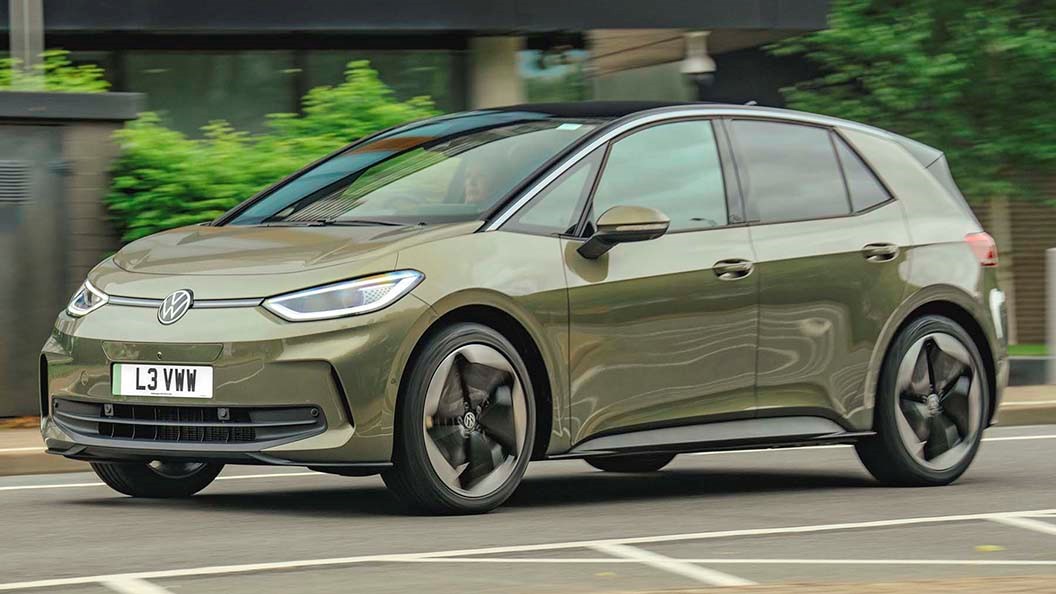
Besides, with up to 100kW charging capability, the ID.3 can potentially add 200 miles of range in 30 minutes. The kind of wallbox you’re likely to have at home will need somewhat longer than that. But in those circumstances, if at all possible it makes sense to be routinely charging overnight when you can make best-use of the lowest-rate EV electricity tariffs (assuming the current energy crisis doesn’t wipe those out completely). Electric car charging costs can otherwise be very expensive.
Verdict
The ID.3 occupies the same premium volume position in the market as the Golf, meaning it’s more expensive than the mainsteram, but not quite up there with the posh alternatives. It’s too pricey to excuse some of the basic plastics and odd ergonomics, but if you can get by with that and don’t mind the slightly numb steering, then the Volkswagen ID.3 has wide-ranging appeal.
It is good to drive, fast for something that isn’t supposed to be a performance car, roomy inside, and brilliantly modern in a very satisfying, wholesome way. It’s shaded by the Renault Megane E-Tech for interior quality, and outpaced by the Cupra Born – but the real elephant in the room is the MG4 EV, which is almost as good as the ID.3 for seriously less money. Right now, we’d take a very close look at that.
However, that doesn’t stop the ID.3 being highly appealing. Once you’ve calibrated yourself to the touch-sensitive buttons and accepted the voice control being largely useless, the biggest issue for the ID.3 is the same as it is for every electric car – the continuingly frustrating public charging infrastructure. Get your head around that, however, as many electric car buyers are able to do, and the ID.3 is easy to live with.